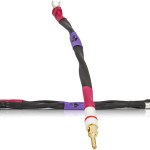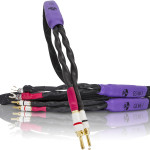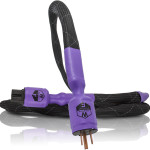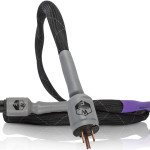Laurence Borden interviews Paul Kaplan of Waveform Fidelity Cables (formerly Kaplan Cables)
Laurence Borden: Paul, welcome to Dagogo. Please begin by telling us about your background.
Paul Kaplan: My formal education was in mathematics and physics. Over a career spanning 40 years, I have applied quantitative techniques in a variety of settings and disciplines, starting as a research associate in the Department of Physiological Chemistry at Johns Hopkins Medical School, then progressing to pacemaker testing and quality control, and ultimately to what became known as financial engineering.
With regard to audio, my interest began at the age of 12, and I later became a (first class) FCC engineer for my college radio station, where I hosted a Blues show.
Music isn’t exclusively “listening” for me. When young and spry, I studied dance. My view is that in a rhythmic sense, music is simply dance, constrained. I took master classes with the Alvin Ailey dance company, and met my wife while Balkan folk dancing. For me, it has always been and continues to be, that listening to music is a physical experience. Music makes me smile, and one of the most positive things I can say about a musical experience is – “It’s got a great beat, and you can dance to it.” Thankfully, at my age, I tend to just dance inside my shoes.
As for musical tastes, mine range all over the spectrum. Surprisingly, the dancer in me listens to quite a bit of jazz, something typically thought of as cerebral; but for me, with a properly implemented (and cabled!) system, one can listen to the most cerebral music and hear the dance within, appreciating both the intellectual and emotional. Living in Brooklyn also allows me to hear wonderful live music, ranging from Simon Rattle rehearsing the Pastoral with the Philadelphia Symphony at Carnegie Hall, to hearing 20+ live Balkan and Middle Eastern bands one week end every year, at a local restored opera hall, aka The Zlatne Uste Golden Festival.
LB: Audio is filled with contentious issues, and “wire” ranks near the top. But of all wire used in audio systems, power cords are perhaps the most contentious of all, because they don’t carry an audio signal. The usual objection to the claim that power cords alter the sound, is based on the idea that as the power entering our homes has already travelled considerable distances in wire that is far from audiophile quality, the last meter or so shouldn’t matter. Having used your power cords in my system for the past few months, it is apparent that they do indeed improve the sound as compared to other power cords I’ve tried, some of which are considerably more expensive. In particular, with your cords I notice dramatically increased detail, with no loss of dynamics and no apparent “spotlighting” of any particular frequency. Keeping to generalities, why do you think the “last meter” in power cords, matters?
PK: First off, I think of this question the opposite way: that cord is the first — rather than the last — meter in its connection to its power provider’s step down / isolating transformer. The system’s connection to the power grid has one first step – the power cord. That said, from a standard engineering perspective, there really is no reason to believe power cords, meeting minimal electrical characteristics specific to the application, feeding well-implemented power supplies within the components, should have any effect whatsoever. Empirical evidence however, suggests otherwise, allowing this issue to be resolved by disciplined listening, not by theory.
My path to power cords was through the design and implementation of power conditioners. It “seems” evident that of all the places to put power cords built to tame those un-named gremlins, that place would not be the cord feeding the power conditioner. But my experience, and those of many others, confirm that the power cord feeding the power conditioner has a substantial effect on a system.
LB: Many would say that cables are tone controls that must be optimized for a particular system. Do you “voice” your cables for a particular sound?
PK: I don’t voice cables, I optimize them. I can build five different power cords with materially, the same major parameters, inductance, capacitance and resistance. They all meet those “a priori” engineering requirements. But all these cables would subjectively sound different. I’d be foolish to not use this opportunity to provide cables that are more accurate. Cables, in and of themselves, are not “musical.” My goal is to provide cabling that allows the recording to come through, without any “flavor” or “voice,” if the recording and associated equipment are up to the task. What the end user should expect from Waveform Fidelity cables is a conduit that allows the musical event to come through, not editorialized by the cable. They will allow you to hear the true capability of your system. The HE mk3 power cord for example, is a consistent performer, with accurate portrayal of soundstage, tonality, extension, dynamics, regardless of length, or use, like source or amplifier/conditioner. Importantly, the extension and dynamics are not at the cost of midrange density, as is often the case. Making a cable capable of properly delivering the sound of a tambourine is not voicing, it’s making the cable neutral and natural.
- (Page 1 of 2)
- Next page →





